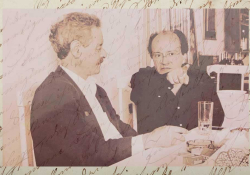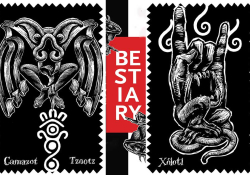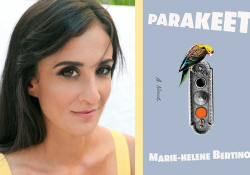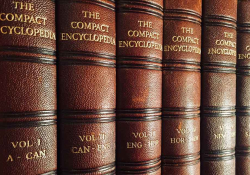A Westerner’s Reflection on Mo Yan
When it was announced yesterday that Mo Yan is this year's winner of the Nobel Prize in Literature, it echoed the case made by WLT executive director Robert Con Davis-Undiano, who delivered the following paper at Beijing Normal University in spring 2012. Mo Yan was also featured in the July 2009 issue of WLT.
Since 1986, Mo Yan has gradually been recognized as one of the significant writers in the world—often ranked with Yu Hua and Su Tong as an influential voice in China’s post-Cultural Revolution period that started in 1976. He is frequently praised by international critics as the writer of his generation most likely to reach the first rank as “a truly great writer” (Inge 74:3, 501). His supporters cite the scope and clarity of his vision, his innovative narratives, especially in the novel, and his remarkable productivity. His translated works in English include Red Sorghum, The Garlic Ballads, Explosions and Other Stories, The Republic of Wine, Shifu: You'll Do Anything for a Laugh, Big Breasts & Wide Hips, and Life and Death Are Wearing Me Out, along with many other published works in China, including White Dog Swing, Thirteen Steps, Man and Beast, Soaring, Iron Child, The Cure, Love Story, Shen Garden, and Abandoned Child. Among serious writers, his ability to write challenging works that continue to surprise with their quality and variety is stunning.
Given Mo Yan’s stature and productivity, I propose that we view him as a possible test case to gauge the depth and quality of Western engagement with Chinese literature. He is only one writer, but Western critics have responded strongly to his work, and how critics and readers react to a major writer is always revealing. A Frenchman in the nineteenth century unhappy about reading Jane Austen and unwilling to read Charles Dickens was probably not open to English literature in any form. I will argue that the Western active appreciation of Mo Yan signals a Western openness to Chinese literature and a deepening engagement with Chinese culture.
I will also argue that Mo Yan’s Red Sorghum (1986) is especially valuable for probing the Western response to his work and Chinese literature, owing to the significance of this novel in his production overall, the book’s grand scope, and the Western attention that the film Red Sorghum has already brought to the novel. Deeply influenced by reading William Faulkner and Gabriel García Márquez, especially by their creation of large fictional worlds like Yoknapatawpha County and Macondo, Mo Yan views Red Sorghum as part of “a full saga [that] is far from finished,” with as many as three sequels still to come (Inge 74:3, 502). Red Sorghum is a large novel with a Tolstoyan scope, and if any sequels appear, it will instantly become one of the grand fictions of our time. Even without sequels, this novel’s focus on the Gaomi Township in Shandong Province suggests China’s direction as a country—making Gaomi Township, as Howard Goldblatt explains, “a metaphor for China’s fate” (260). Over time, I believe that this book will be recognized as one of Mo Yan’s masterpieces.
My task here is to examine the Western response to this novel, mainly American-based scholarly articles that have addressed this book—its content, form, and vision—since its translation into English by Howard Goldblatt in 1993. Western criticism and interpretation of Mo Yan’s work are robust, and I will discuss them in the four areas that George Steiner names as the inevitable difficulties of understanding any literature. 1) First is cultural knowledge, what George Steiner calls a “contingent difficulty” (27)—in this case, efforts to unpack and gloss the Chinese cultural and historical contexts of Mo Yan’s work. This is cultural information, as Steiner notes, that one could “look up” in history books and references sources. For a Western reader, access to such knowledge is critical in that Western critics and readers often know little outside of European culture. 2) Next are discussions of literary forms that Mo Yan uses, what Steiner calls a “modal difficulty” (29). This area would typically include discussions of Mo Yan’s version of the novel and short story and how he adapts them for his purposes. 3) Third is what Steiner calls a “tactical difficulty” (33)—in this case, how Mo Yan deploys narrative to shape his material, probe it, and raise questions. 4) Finally, there is what Steiner calls an “ontological difficulty” (41)—Mo Yan’s broader vision and what he may be saying about China and its future. This is the grand perspective where we see the significance and direction of Mo Yan’s work overall.
Accessing Chinese culture and history to read Mo Yan’s work is not difficult, but it is a critical task for understanding his novels. A paucity of background knowledge will lead to misreading and misunderstandings on every page. For example, Red Sorghum is set during the second Sino-Japanese War that ran from 1937 through 1945, the time immediately preceding Mo Yan’s childhood. This is a dark time when the Japanese attacked China with mass killings and unthinkable cruelty. Without a functioning central government, each regional township in China was unable to keep order and protect its people. With conflicts arising even among townships and Chinese warlords, and with failed social and civil institutions, the Chinese were at Japan’s mercy, and the depth of hunger, poverty, and suffering inflicted on China is beyond simple description. Such a story cannot be a single plot line or tragedy, so all understanding of this novel must begin with awareness of this complicated human drama during the years 1937-1945.
Such complex historical material does not fit neatly into book reviews, scholarly essays, or even extended literary criticism as usually practiced in the West. Western scholarly publications focus on literary aesthetics and discussions of character and narrative, and sometimes on literary theory, and critics writing these essays frequently are not prepared to discuss China in any respect. So the Western encounter with Red Sorghum has not always been productive, even when knowledgeable critics discuss Mo Yan’s work. This oversight is not any one person’s fault but reflects a long-standing failure in the West to focus on Chinese culture and history as relevant background for understanding Chinese literature.
The second difficulty—what Steiner calls “modal,” relating to literary genre (a “mode”)—is more clear cut in regard to Mo Yan. Mo Yan’s chooses to write novels and short stories instead of plays, poetry, etc., and the question is whether he writes a traditional form of the novel and short story as practiced in the West, or if his works are hybrids. John Updike has argued that Mo Yan’s take on the novel is shaped by the fact that in China the novel “had no Victorian heyday to teach it decorum” and had little history behind it. As a result, Mo Yan is “cheerfully free with the physical details that accompany sex, birth, illness, and violent death” (3). Updike’s observations about Mo Yan’s freedom of content compared to the Western novel points up that the Chinese novel shares almost no history with its Western cousin. For the Chinese novel, for example, there was no “rise of the novel” from middle-class origins in the eighteenth-century, no Enlightenment, and no Victorian refinement of the novel’s technique in the late nineteenth century. As a truly modern phenomenon, the Chinese novel as Mo Yan practices it is recognizably the novel as known to Western readers, certainly, but without the same constraints on content and form. But China did possess a well-established tradition of vernacular fiction before the impact of the modern West with such works as The Water Margin, Journey to the West, Dream of the Red Chamber, and others. So even if the novel was not what it is now in China, there are canonical works of Chinese fiction.
So with a tendency toward greater boldness in experimentation, as various critics have noted, the Chinese novel has also frequently imitated Western novels. For example, Mo Yan credits William Faulkner’s impact on his work, but he does not simply imitate Faulkner. Mo Yan’s style is “convoluted, as in the flow of stream of consciousness[.] [Mo Yan’s] imagery is rich and threatens to drown the reader in its profuseness, and the text reflects a surrealistic vision that uses concrete details from the exterior world at the same time that it leads us into the inner reality of emotional confusion and anxiety.” In other words, this dense prose is Mo Yan’s own style even though it shows traces of Faulkner’s (Inge 1990, 18).
The topic of narrative technique leads next to what Steiner calls a “tactical difficulty“—in this case, how Mo Yan uses technique to shape and probe narrative material. Critics often note that Mo Yan juxtaposes myth and realism and practices a version of Chinese “postmodernism” in his highly-experimental narratives. In Red Sorghum, for example, there is a famous creative manipulation of point of view, with the narrator supplying knowledge and responses from his grandparents that he could not possibly know, and The Republic of Wine abandons realistic narrative all together to juxtapose “Mo Yan” as a character within the novel who discusses novel writing with this novel’s reputed author, Li Yidou. This is experimentation with character, plot, and the fourth wall of aesthetic distance that is reminiscent of postmodern writers such as Donald Barthelme and John Barth.
However, while such experimentation has a postmodern look, Mo Yan consistently cites folklore and the Chinese story-telling tradition, the most conventional of sources, as his major influences. In this way, Mo Yan’s modal difficulties (often associated with more postmodern techniques in the west) bears a resemblance to authors associated with “root-seeking literature” like Han Shaogong, as they both appear “postmodern” to western readers by way of reusing classical Chinese and oral literary traditions and tropes. Mo Yan, for instance, learned traditional Chinese stories as a young child, as “my grandparents and my father were all great storytellers. But my grandfather’s brother. . .was a master storyteller, an old Chinese herbal doctor whose profession brought him into contact with people from all walks of life.” During winter evenings at home in Shandong Province, “we [children] begged him to tell us a story” (2010, 224), and from this master storyteller alone Mo Yan “memorized some three hundred. . .stories” (225).
Mo Yan comments that he adapted these stories in his work, which helps to explain the episodic structure of many of his narratives. He adds that “the ones that haven’t been written down are far more interesting than those that have” (225). Mo Yan concedes that his narratives are praised for “fantastic innovation” and postmodern experimentation, but he responds by saying that “I can’t help but chuckle to myself. If this is innovation, then being innovative is the easiest thing in the world” (227). Here Mo Yan is acting as a cultural conservationist and historian, preserving stories that are foundational to and also reflect experiences key to Chinese identity and that are, in some cases, hundreds of years old. His experimentation is transformative and challenges expectations of how a novel should work and what stories should be told, and it also creates continuity.
As literary critic Tonglin Lu notes, Mo Yan may have other motives for writing in an experimental style beyond the influence of Chinese storytelling and Faulkner (as well as Gabriel García Márquez). She believes that Mo Yan’s “manipulation of complicated narrative perspectives” is calculated to break from past practices by violating “the convention of a seemingly objective and objectifying narrative framework [of] social realism” (189). As many critics have noted, Mo Yan’s fiction and that of other writers in this period seem focused on replacing social realism with freer form and content.
The last area of difficulty, what Steiner calls the “ontological difficulty,” concerns the total vision and world view of Red Sorghum. This is the most difficult area of Mo Yan’s work to discuss as it cannot be solved like a “problem” with more cultural information about China (material to “look up”), how Mo Yan uses the novel, or how he deploys narrative technique. This final dimension of his work connects all others to make a total vision, and discovering this vision is the payoff for reading serious literature such as Mo Yan’s. With a powerful novelist like Mo Yan, the outcome of finding this larger vision will be revealing of important trends and developments.
Mo Yan has written that “on the surface, Red Sorghum seems to be about the war against Japan. But in reality, it’s about the folklore and legends told by my kin. Of course, it’s also about my longing for the contentment of love and a life of freedom” (2010, 226). Mo Yan writes here with an author’s directness about craft instead of having a critic’s perspective on literary effect—emphasizing the production rather that the reception side of literature. So he references matter-of-factly the task of incorporating Chinese folklore (the stories he heard as a child) as his “content”—hence the dimension of Red Sorghum open to being shaped by craft and the part of his writing for which he has conscious control. It is hard to know exactly what Mo Yan means here by “love” and “freedom,” but I would wager that he is talking about personal and social relations in civil society, as I will return to shortly.
I cite Tonglin Lu’s comments particularly for the strong association she makes of the sorghum fields with the human body, as the novel in a variety of ways establishes this all-important bond. There are explicit connections in the novel between blood, flesh, and the sorghum fields, between the sorghum stalks and human beings, among the sorghum fields, sustenance, and wine making, all situated around sorghum fields as a source of vitality and a staging for death. This connectedness to the sorghum fields in the novel is so pervasive as possibly to go unseen.
The constant presence of the sorghum fields in the novel creates the image of “an original life” (195), and any reader can attest that the dominant image and constant presence in this novel are not only the sorghum fields but the community’s life associated with them. Tonglin Lu connects “an original life” with the narrator’s grandmother, especially her actual body, so that the sorghum field “objectifies Grandma’s body by transforming it into a stage of actions.” “Like Gaomi, the country of the red sorghum,” she continues, “Grandma is the object of countrymen’s love shared by the narrator” (197). Tonglin Lu’s argument culminates with the claim that “the sorghum plants are presented not only as human beings” but as the deified “quintessence of the original world,” the totality of the fields as a kind of nurturing great mother (198).
According to Tonglin Lu, Grandma and the sorghum fields are a matriarchal and natural presence in a world otherwise manipulated and run by men. Tonglin Lu’s ultimate point is that “the femininity Grandma embodies is highly contradictory and can be preserved only through the premature death of the heroine in order to reconcile her social function. . .an eternal object of male desire” (200). In other words, as an earth spirit Grandma can never be possessed by any man. All of which is to say that this novel evinces a traditional idealization of women that reveals, in spite of apparent experimentation and innovation, an underlying patriarchal scenario.
Tonglin Lu’s comments certainly privilege images of Grandma at the novel’s beginning, but the overwhelming focus throughout this novel is the huge canvas depicting human suffering, which includes women and men indiscriminately, and which has a remarkable presence on every page in this novel. The Japanese holocaust in this novel is a terrible force devastating all culture and is at the core of everything else that happens in this book .
As a Western reader, I find the most compelling aspect of this book not to be gender relations, as Tonglin Lu suggests, but the sorghum fields as associated with the human body. Mo Yan shows how war in the late 1930s destroyed civil life and community in China and overcame barriers of decency that could have protected communities and vulnerable people from barbarism and war’s devastation. In Red Sorghum, cultural and social institutions do not provide protection and nurture, and in the aftermath of such failure the human body itself becomes the target to be burned, trampled, penetrated, flayed, and dismembered. These acts are repeated so often in the novel that we eventually come to see them as ways of searching the limits of what the body can endure in a kind of epistemological horror show. The body is probed to reveal the limits of what people can know and suffer through, suggesting that at the extremes of cultural default the human body is the only stage left for playing out conflict when the social institutions have collapsed. Mo Yan seems to say that the desecrated human body stands in for cultural and social institutions and processes information that was meant to be processed impersonally. In effect, Mo Yan creates a negative sublime in which the human body stands in for culture and bears the burden that culture and communal conventions can no longer shoulder.
Thus, the township community and the persistent violation of bodies in it in Red Sorghum are Mo Yan’s epic depiction of the cost paid when social and cultural institutions falter. When Mo Yan says that this novel is about “my longing for the contentment of love and a life of freedom,” he is presenting the positive side of what is otherwise depicted as a negative, stark vision when atrocity in regard to the human body plays out in every conceivable way in this novel.
This novel’s reception in the West, particularly in the U.S., is still an event under way, but Western readers appreciate—I appreciate—that this is a book comparable in scope to Tolstoy’s War and Peace or Dostoyevsky’s Brothers Karamazov or Crime and Punishment. That is, Red Sorghum attempts to fill a huge historical canvas and also tell a particular story that focuses events taking place in China in the early twentieth century. All of this happens in a book that demands an unusually intense focus on the immediacy of regional storytelling against a backdrop of immense national devastation.
For a Western reader, Red Sorghum is a startling and powerful story that runs counter to many Western expectations of what a great Chinese novel could be. In its avoidance of simple categories and conclusions, there is an immediate challenge in how a Westerner will regard or encounter this novel. Pushing the limits of what a novel can succeed in showing well, how a novel will “develop” as a narrative, and the vision of history and civilization that it projects, this challenging and brilliant novel is one of the most important doors that has been opened for Westerners to gain a glimpse of Chinese history and culture as a robust alternative to projecting Western values and identities on the East.
Finally, Red Sorghum is a novel that will successfully resist all attempts to tame it into being a work familiar, comforting, or manageable to Western readers. It creates a vision of the negative sublime connected with the human body that challenges Western readers to see beyond the limited scope of European prosperity and American exceptionalism. This early novel by Mo Yan is a book with a broad perspective that looks intently at what is left when the veneer of culture is peeled away from a community, and the only boundaries left are those imposed directly by the body’s ability to endure pain and survive.
With this difficult and challenging vision, Mo Yan opens a door for Western engagement with Chinese culture as few others have done. His particular gift is to be able to engage with culture on many levels at once and to have the capacity to redeem pathos on a large scale from the dungeon of mere suffering. The starkness of Mo Yan’s steady gaze into a period of Chinese history is unrelenting and frightening, but it is also clear-eyed involvement with realities in the modern world that Western culture is not adept at seeing or even wanting to see.
Dr. Robert Con Davis-Undiano is Executive Director for World Literature Today. RC (as he is called) joined OU’s faculty in 1980, and in 1999 he was named Executive Director of OU’s international magazine World Literature Today and holder of the Neustadt Professorship in Comparative Literature. In 1999, he received a Presidential Professorship, and in 2004 he became the third recipient of the prestigious Sullivant Award for Perceptivity. In 2005, he became Dean of OU’s Honors College.
Works Cited
Goldblatt, Howard. “Speaking Out.” Books World 10,11(November 1995):260-265
Inge, M. Thomas. “Mo Yan and William Faulkner: Influences and Confluences.” The Faulkner
Journal (Fall 1990):15-24.
Inge, M. Thomas. “Mo Yan Through Western Eyes.” World Literature Today 74:3 (Summer
2000): 501-506.
Mo Yan. “My American Books.” Chinese Writers on Writing. Ed. Arthur Sze. San Antonio,
Texas: Trinity University Press, 2010.
Mo Yan. Red Sorghum. Trans. Howard Goldblatt. New York: Penguin Books. 1993.
Steiner, Geroge. On Difficulty and Other Essays. Oxford: Oxford University Press, 1972.
Tonglin Lu. “Red Sorghum: Limits of Transgression.” Politics, Ideology, and Literary
Discourse in Modern China. Durham and London: Duke University Press, 1993, 174-
187.
Updike, John. “Bitter Bamboo.” The New Yorker 81.12 (May 2005).











